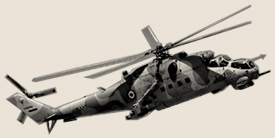The wars decimating the ancient cities of Mosul, Taiz, and Aleppo have contributed to the greatest global refugee and migration crisis since World War II.
Some 17.5 million people have been displaced in Yemen, Syria, and Iraq.
A special report from the International Committee of the Red Cross
War is back in cities … civilians are in the middle of it all once again.Antony Beevor, historian
Fifty million people are currently bearing the brunt of war in cities around the world. In the Middle East in particular, protracted and highly destructive urban conflicts are devastating the region.

The wars decimating the ancient cities of Mosul, Taiz, and Aleppo have contributed to the greatest global refugee and migration crisis since World War II.
Some 17.5 million people have been displaced in Yemen, Syria, and Iraq.




Eleven and a half million people — more than 3 people per minute — have fled their homes in Syria alone since the beginning of the war. More than six million live in ad hoc shelters or host communities within Syria, while nearly five million have left the country.
These numbers are staggering — but they only tell part of the story.
A mother of a dead child won’t sleep at first, but eventually she can sleep at night … But a mother of a missing child, she will never sleep.Maggie Andriotti, who lost three children
during the Lebanese civil war (1975-1990)
For centuries, armed conflicts were predominantly fought on vast battlefields, pitting thousands of men, large army corps, and heavy weaponry against each other in an expansive theater of war. Cities might have been besieged or sacked, but fighting rarely took place in the streets.
“In armed conflicts right now, almost all of the fighting takes place in cities,” says Professor Eyal Weizman. As the world urbanizes, so does conflict. City centres and residential areas are now the battlefields and frontlines of our century.
It’s not just the general population that is growing in cities — hostilities in armed conflicts are increasingly taking place in population centres. This is a trend that is only likely to continue.
While past insurgencies could conceal themselves in mountainous areas or jungles, the vulnerability of conducting warfare in the wide-open terrain of the Middle East has driven fighters to base their operations in cities.

There, armed conflicts are waged with weapons designed for use on open battlefields, amplifying their destructive power in the crowded city.
Age-old tactics of warfare can also be seen in today’s urban battlefronts: sieges intended to starve out or demoralize the opponent, aerial campaigns designed to terrorize the civilian population, and intense, artillery-backed street-to-street fighting.
Again, all too often, it is civilians who bear the brunt.
My wife was making bread and my baby son was with her. The house caught fire. I rushed to the place where it had fallen … I could see body remnants and blood on the wall… Another rocket landed, I was thrown from the ground and broke my leg.Abo Hani, Homs
When wars are fought in cities, the vital infrastructure that enables communities to function is damaged or destroyed.
A single pipe broken by a high-impact explosive weapon can deprive 100,000 people of water. That same weapon may also destroy the neighbourhood’s sewage system, causing thousands to fall ill and placing further strain on already overstretched hospitals.
Local economies collapse and populations flee, leaving fewer doctors and engineers, and no money to pay the salaries of those who remain. The acute pain caused by one attack triggers a ripple effect of long-term suffering that leaves no part of life unscathed.
The accounts published here represent a fraction of the research represented in the ICRC’s full report on war in cities.
The report aims to provide a deeper understanding of one part of this crowded picture, through the words of those who have survived it.
This is the city at war.
If you’d like to read the full ICRC report, enter your email here and you’ll be sent instructions to download the PDF.
I just want to be alright. It’s hard to be ‘okay’ when you’ve seen so much. I saw my city die; I saw my people perish; I saw myself break. I don’t know if I’ll ever be okay but I want that.Sami, 29-year-old who fled Aleppo for Damascus, then Beirut, Lebanon.
